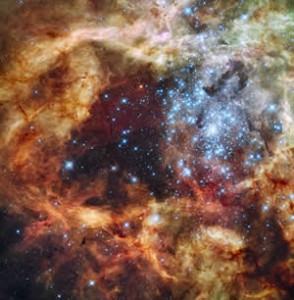With Curiosity landing on Mars, it seems like a good time to address Jews in space … or at least religion in science fiction and fantasy. For those who are serious about their fun summer reading, here are a few suggestions.
In the past couple of years, we’ve purchased 3 books which address this issue: Sex, Politics, and Religion in Star Wars edited by Doulas Brode and Leah Deyneka (Scarecrow Press, 2012;) Morality for Muggles by Moshe Rosenberg (Ktav, 2011;) and Sacred Space by Douglas E. Cowan (Baylor University Press, 2010.)
“May the Force be with Jew,” says Andrew Bank, in the Star Wars anthology. He compares Judaism with “Jedi-ism.” Both systems have a long tradition of oral transmission; stress respect for the mentor/teacher; and emphasize the importance of actively choosing to act as a force of good. On the other hand, Julien Fielding finds many aspects of Eastern religions in the Star Wars series. He analyzes the characters’ names, costumes, and actions to find links to Hinduism, Buddhism, and Taoism.
In Sacred Space, Cowan examines God, prophecy, and religion in many of my favorite (and much missed) television series. Many science fiction stories leave out any explicit mention of religion, but Star Trek: Deep Space Nine (in my opinion the best of the ST series) and Babylon 5 both featured many alien cultures, each with their own perspective on God and their own place in the universe. While the protagonists of the Stargate series had adventures on a different planet each week, the underlying story in the Stargate series was trace back the origin of life and to figure out how individuals and even whole species can achieve transcendence. Similarly, the remains of the mostly polytheistic human race in Battlestar Gallactica sought their planet or origin, while fighting with the monotheistic Cylons.
Moving back into our galaxy, Moshe Rosenberg finds lessons in Jewish values in J.K. Rowling’s Harry Potter series. His first chapter focuses on something near and dear to many kids’ hearts: breaking the rules. He shows that most of Harry’s rule breaking was to protect one or more of his friends. Rosenberg show examples from the Talmud and Tanach where breaking the rule was the best options. Other chapters focus on friendship, teachers, and prejudice.
For those more interested in the science, NASA has some amazing pictures of our planet, our galaxy, and beyond in their Picture of the Day gallery http://apod.nasa.gov/apod/astropix.html
Sheryl
p.s. Of course I know that many Jews actually have been in space – astronauts from several countries are members of the tribe!


Leave a Reply